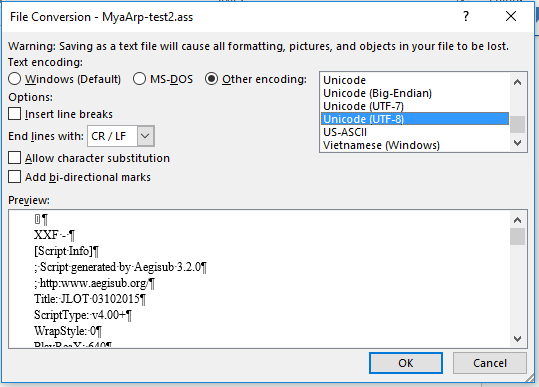For a couple of years now, language projects preparing the script of the Jesus Film after having translated Luke and other Scripture portions have been able to use a tool that would extract the relevant Scripture passages mentioned in the script and paste them into notes within the script file. This tool uses a specialized version of the Paratext 6 and 7 “Extract Lectionary” tool that was available in the Advanced Checks menu. (The Jesus Film tool when installed is found in Checking > Advanced > Jesus Film > Verse Extract - JLOT Recording Script).
Programming changes in how Paratext 8 processes Python scripts mean these tools will not work in Paratext 8. I have tested a workaround using a Bible module and this does seem to work.
This is the process:
- Download the file “VerseExtract-JLOT_Recording_Script_mod.sfm” and place it inside the “_Modules” folder inside “My Paratext 8 Projects”.
Link to the file
- Create a Bible module in your Paratext project, (Tools > Open Bible Module). Choose the above file as the specification.
- In Paratext, go to the module book you have created, and Save to RTF the resulting module. (File, Save as RTF).
- In Word, open the RTF file, and save as a text file. If Word says some text will not save correctly in the current encoding, change the encoding to “Unicode (UTF-8)”

- Copy or move the folder to the “Scripts” folder inside the Aegisub setup, and change the text file name so the last three letters end in “.ass” (the file extension expected by Aegisub)
- You can now start Aegisub and select this script file, and the script will have notes of all the relevant verses you have translated in Paratext.
Doug HIgby is also working on a module for the Jesus Film script, but that module has a different goal. That module is to guide teams that have not translated anything, to show them which passages they need to translate to have the relevant parts of the Scripture for the Jesus film. This module is to extract relevant passages that have already been translated into the script format.
 General
22
General
22
 Paratext
2.3k
website
Paratext
2.3k
website
 PTXprint
378
website
PTXprint
378
website
 Paratext Lite
72
website
Paratext Lite
72
website
 FLExTrans
38
website
FLExTrans
38
website
 Scripture Forge
20
website
Scripture Forge
20
website
 Publishing Assistant
17
website
Publishing Assistant
17
website
 Paratext 10 Studio
17
website
Paratext 10 Studio
17
website
 Platform.Bible
4
website
Platform.Bible
4
website